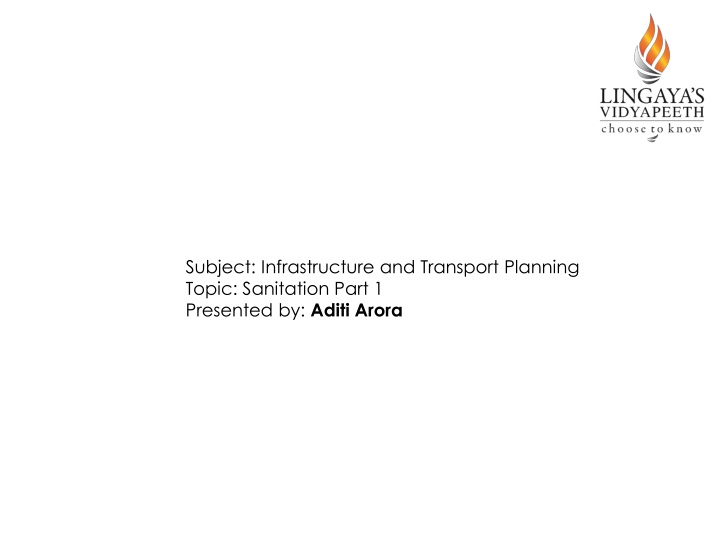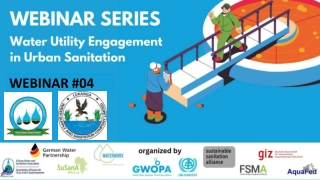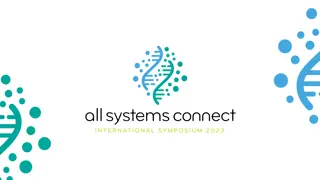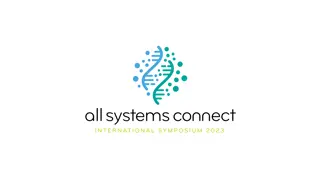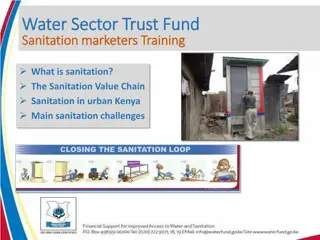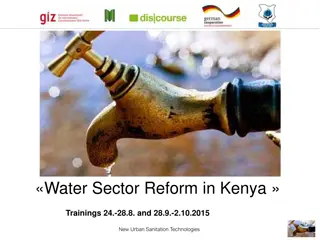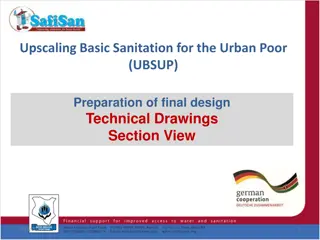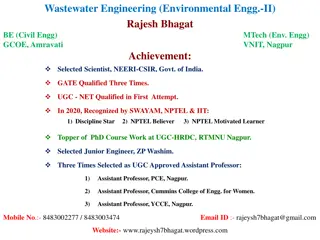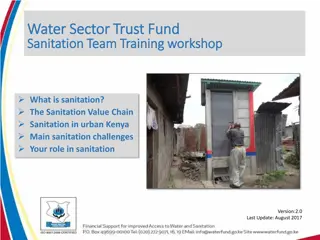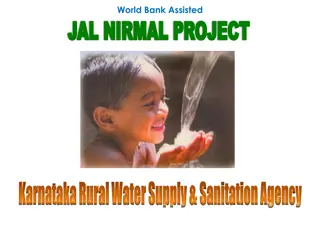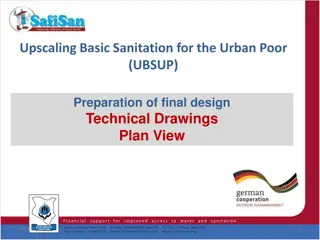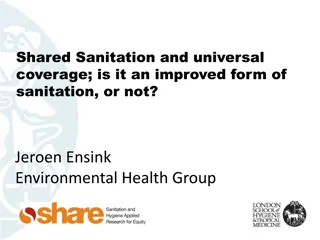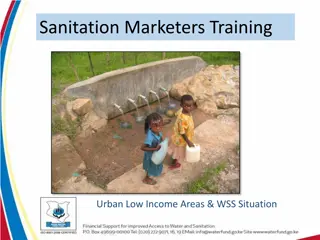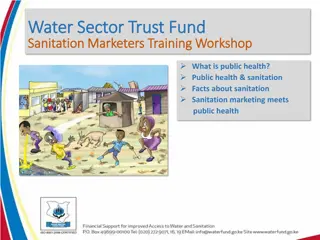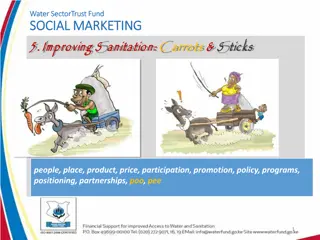Challenges and Solutions in Urban Sanitation Infrastructure Planning
Sanitation plays a vital role in promoting public health by preventing human exposure to waste hazards and ensuring proper sewage disposal. This presentation covers key aspects of sanitation, including the generation, collection, treatment, and disposal of sewage in urban areas. It highlights the gaps between sewage generation and treatment capacities in metropolitan cities like Delhi, emphasizing the need for effective institutional arrangements and management strategies to address these challenges.
Download Presentation

Please find below an Image/Link to download the presentation.
The content on the website is provided AS IS for your information and personal use only. It may not be sold, licensed, or shared on other websites without obtaining consent from the author.If you encounter any issues during the download, it is possible that the publisher has removed the file from their server.
You are allowed to download the files provided on this website for personal or commercial use, subject to the condition that they are used lawfully. All files are the property of their respective owners.
The content on the website is provided AS IS for your information and personal use only. It may not be sold, licensed, or shared on other websites without obtaining consent from the author.
E N D
Presentation Transcript
Subject: Infrastructure and Transport Planning Topic: Sanitation Part 1 Presented by: Aditi Arora
SANITATION Sanitation is the hygienic means of promoting health through prevention of human contact with the hazards of wastes as well as the treatment and proper disposal of sewage or wastewater.
C O N T E N T S - POINTS OF GENERATION COLLECTION TREATMENT DISPOSAL DEWATS GREY WATER DISPOSAL NORMS & STANDARDS INSTITUTIONAL ARRANGEMENTS PLANNING PROVISIONS &MANAGEMENT ISSUES
Promises.. Clean and safe drinking water to all citizens. Access to toilet for each household by 2019. Awareness programmes to change the behaviour. No new schools, colleges, bus stands and dispensaries to be built without treatment plant.
POINTS OF GENERATION Sewage is generated from houses, institute such as college, school, office complex, community toilets, industrial townships etc. Waste water generation in Delhi has been assessed at 3,800 million litres a day (MLD), whereas the city s waste water treatment capacity is 2,460 MLD.
There are 35 metropolitan cities (more than 10 Lac Population), 15,644 Millions Liter Per Day (MLD) of sewage is generated from these metropolitan cities. The treatment capacity exists for 8040 MLD i.e. 51% is treatment capacity is created. Among the Metropolitan cities, Delhi has the maximum treatment capacity that is 2460 MLD (30% of the total treatment capacity of metropolitan cities) As per report submitted to the Supreme Court by Central Pollution Control Board (CPCB) on 4th December 2012, Untreated human waste from nearly 45% of the population in Delhi flows into the Yamuna river as these homes are not connected to the city s sewage network. As per August 2004 CPCB report, Out of 3267 mld of treated & untreated sewage, 2365 mld is discharged into the River Yamuna, 661 mld is discharged into Agra Canal & 241 mld is used for irrigation.
TREATMENT Sewage treatment is the process of removing contaminants from the process of removing contaminants from wastewater and household sewage wastewater and household sewage, both effluents and domestic. It includes physical, chemical, and biological processes includes physical, chemical, and biological processes to remove physical, chemical and biological contaminants. Its objective objective is to produce an environmentally safe fluid produce an environmentally safe fluid waste stream and a solid waste suitable for disposal or reuse . waste suitable for disposal or reuse . The objective of sewage treatment is to produce a disposable effluent without causing harm to the surrounding effluent without causing harm to the surrounding environment, and prevent pollution. produce a disposable
IMPORTANCE OF SEWAGE WATER TREATMENT PLANT It is very important to provide some degree of treatment to to provide some degree of treatment to wastewater before it can be used wastewater before it can be used for agricultural or landscape irrigation or for aquaculture. The principal objective of sewage treatment is generally to allow human effluents to be disposed of without danger to allow human effluents to be disposed of without danger to human health human health or unacceptable damage to the natural environment. According to a research, a large number of people die water born diseases in most of the developing countries. Therefore, it is very important to get the proper treatment of the water for a healthy living. large number of people die from
SOURCES OF WASTE WATER Human waste Washing water Rainfall collected on roofs, yards, hard-standings domestic sources Direct ingress of river water Highway drainage Industrial waste
WASTE WATER TREATMENT PROCEDURE Sewage treatment generally involves three stages, called PRIMARY TREATMENT SECONDARY TREATMENT TERTIARY TREATMENT TYPES OF THE TREATMENT PROCESS
PRIMARY TREATMENT Primary treatment removes materials from the raw sewage before they damage or clog the pumps and sewage lines of primary treatment clarifiers trash, tree limbs, leaves, branches etc.. branches etc.. The settled and floating materials are removed settled and floating materials are removed and the remaining liquid may be discharged or subjected to secondary treatment. removes materials that can be easily collected trash, tree limbs, leaves,
SECONDARY TREATMENT Secondary treatment removes dissolved and suspended biological matter. removes dissolved and suspended biological matter. Secondary treatment is typically performed by indigenous, water-borne micro-organisms in a managed habitat. Secondary treatment may require a separation process to remove the micro micro- -organisms organisms from the treated water prior to discharge or tertiary treatment. remove the TERTIARY TREATMENT :- The purpose of tertiary treatment is to provide a final treatment stage effluent quality before it is discharged to the receiving environment (sea, river, lake, ground, etc.). More than one tertiary treatment process may be used at any treatment plant. final treatment stage to raise the If disinfection is practiced, it is always the final process. It is also called "effluent polishing."
EFFLUENT DISCHARGED IN WATER BODY
